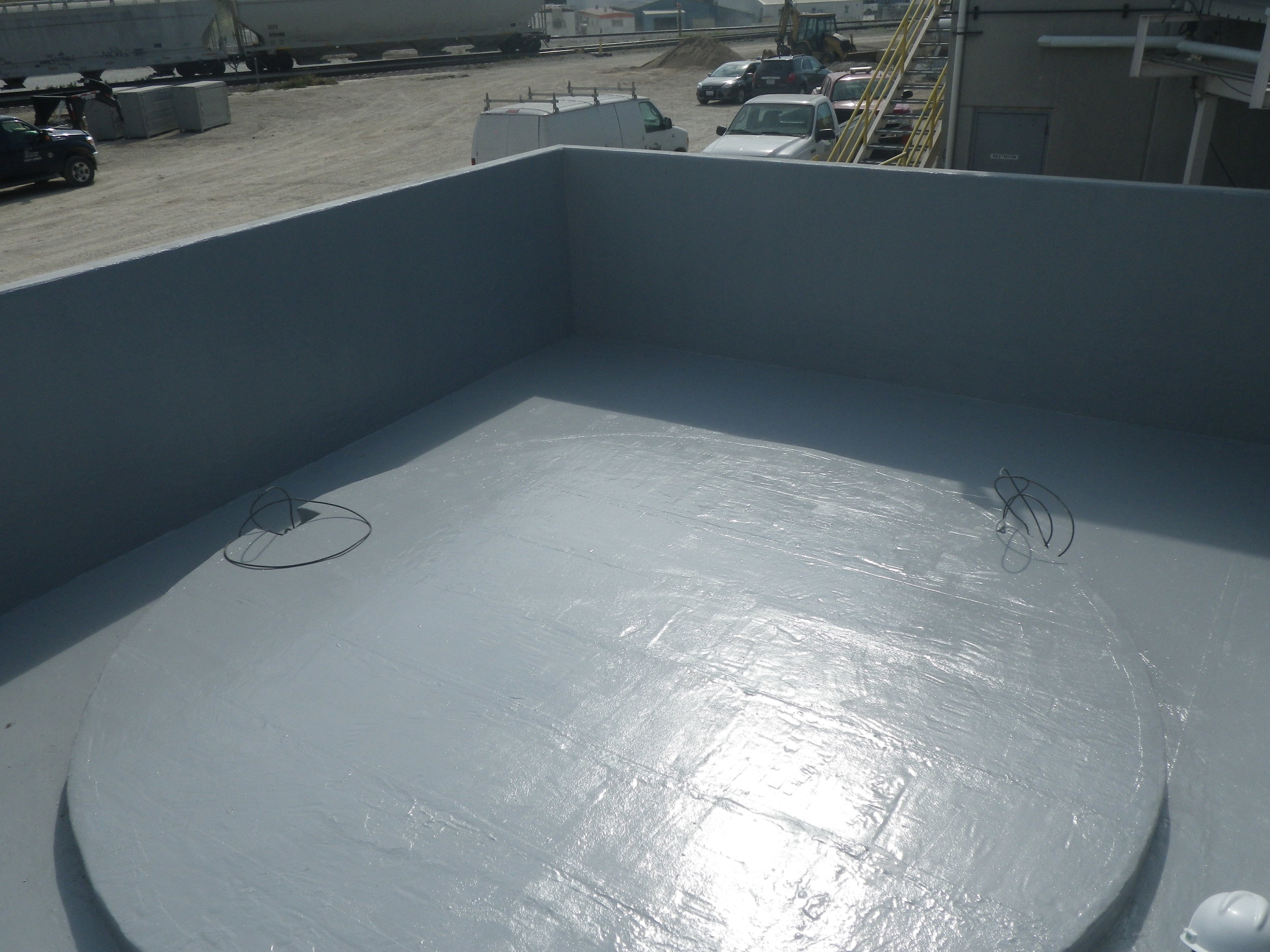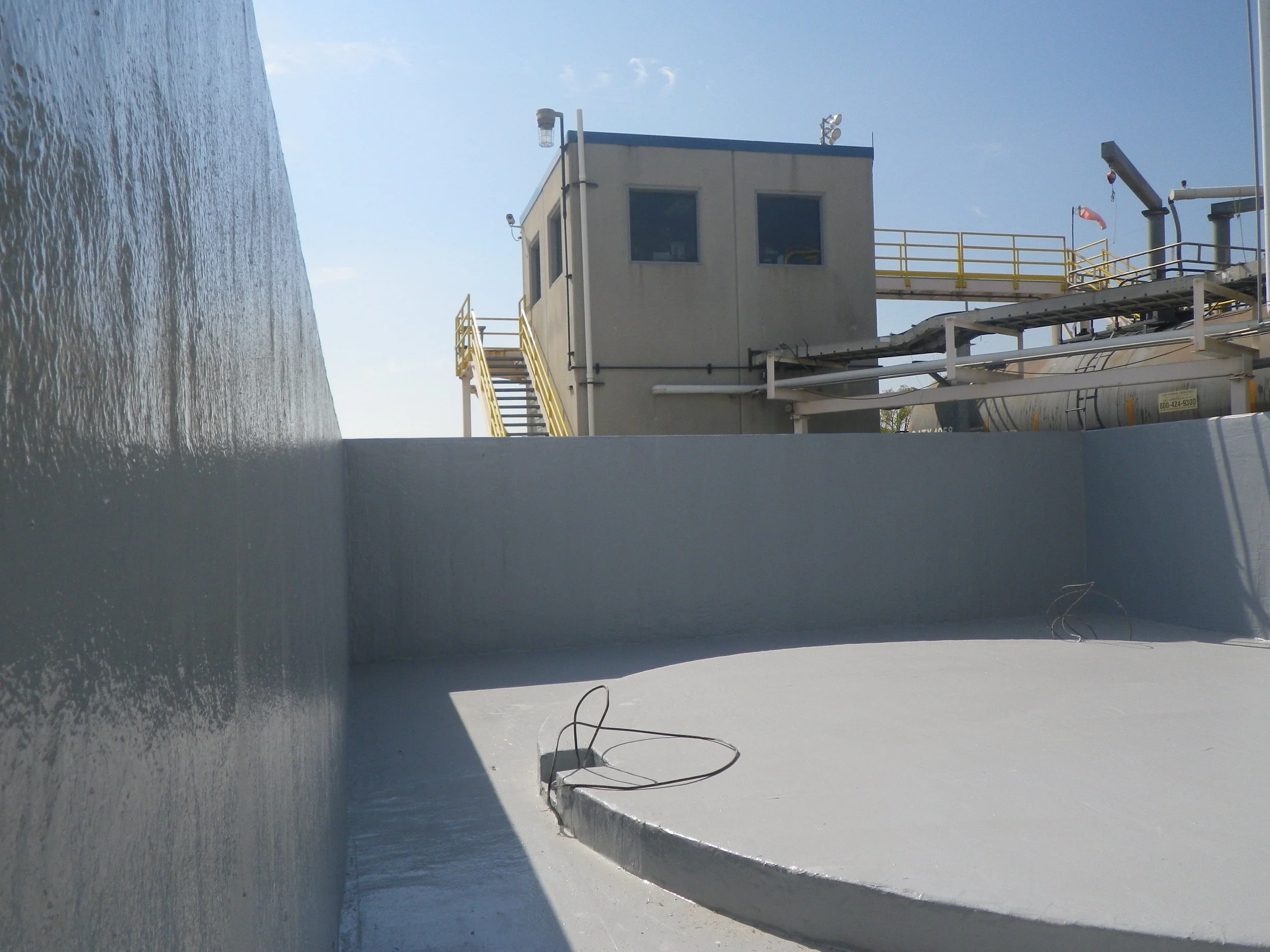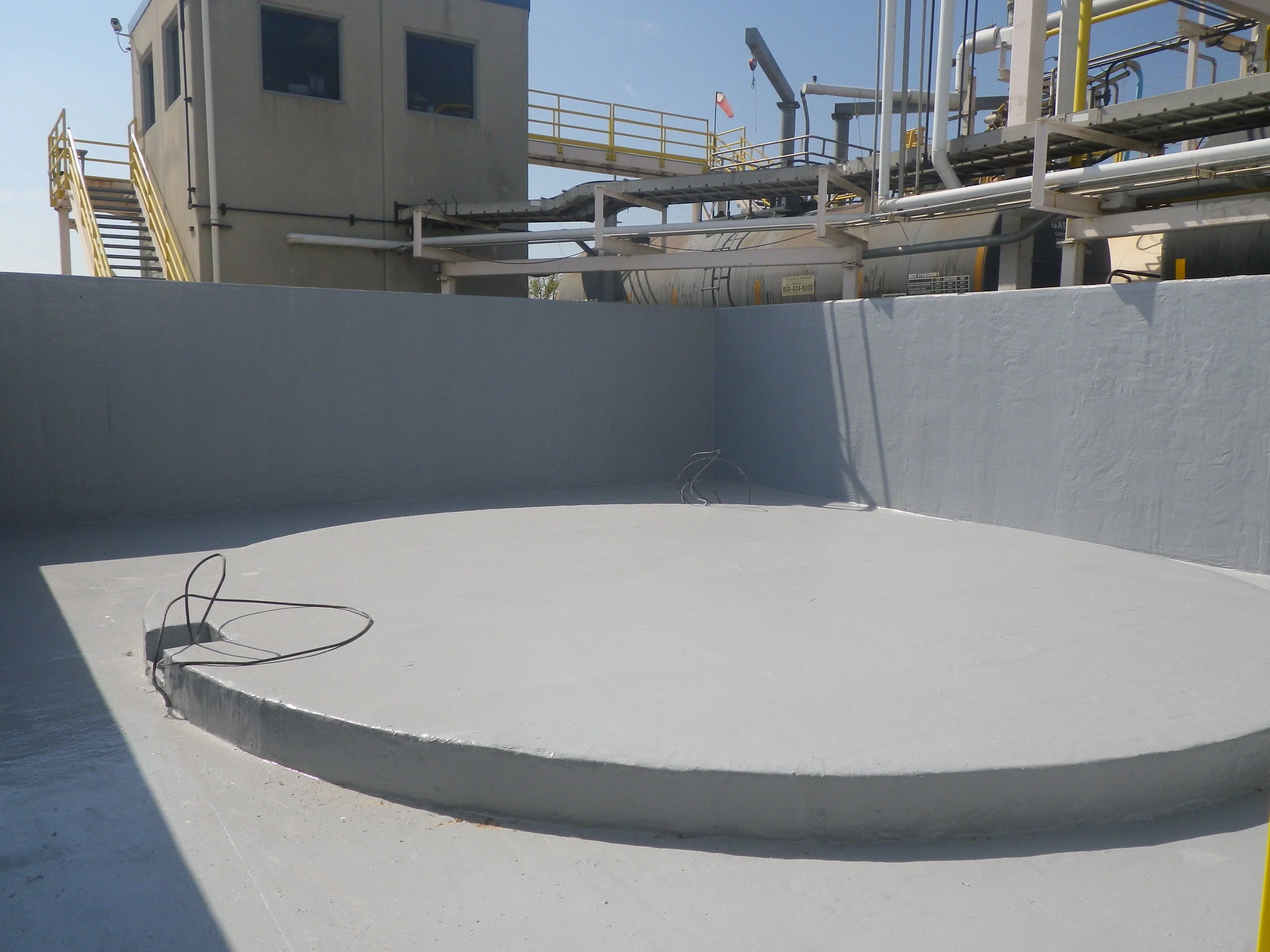ABOUT
When discussing containment systems, people are usually referring to the storage of hazardous chemicals, that when breached could result in a chemical spill. Pharmaceutical and chemical processing plants are good examples of the types of facilities that utilize containment systems. Often, there are secondary containment structures in place to catch the overflow that occurs in the case of a primary containment failure. In order to contain the highly corrosive material from causing injuries and expensive damage to a facility, they must be properly lined.
Standard Polymer’s lining products are formulated to stop any chemical leaks or spills from the primary containment and avoid any permeation into the ground underneath the containment. They are also designed to defend the integrity of concrete systems by preventing chemicals from leeching into the permeable surface or gaining entry through junctions and cracks.
While primary and secondary containments may be what comes to mind first when thinking about containment systems, they aren’t the only places linings are used. Our materials also guard and preserve concrete floors, walls, trenches and sumps in harm’s way of chemical attack.
With a solid package of application options in our arsenal, our team of NACE and ICRI Certified staff are ready and willing to help with specifications and recommendations. Our goal is to ensure the products you use on your project are in line with government regulations and provide the safeguard you need from dangerous and costly chemical damage.
Please contact us for more information or for a specific quote for your containment system project.
FAQs
What is the difference between primary and secondary containments?
Primary containment systems hold solids, liquids, chemicals or waste. A secondary containment is mandated as necessary if the contents of the primary containment are hazardous and a breach of that containment would endanger life, soil, or water around it. The secondary containment must be of a large enough capacity to hold the volume in the primary containment.
What is a UST?
Any tank or underground piping that is connected to the tank, having at least 10% of its combined volume underground is designated an Underground Storage Tank system (UST).
What dangers are posed by UST’s?
Environmental hazards are posed by leaking underground storage tanks, releasing petroleum, acids, caustic chemicals or other hazardous pollutants into the groundwater and soil risking public health and causing risk of explosions or fires. The Environmental Protection Agency requires secondary containment systems to prevent migration of dangerous/hazardous contents from the tank and piping to soil, ground or surface water through the RCRA (Resource Conservation and Recovery Act). Old bare steel containments are at risk of leaching contents due to corrosion. UST’s that are improperly lined or were incorrectly installed are at risk as well as those which are not operated and maintained per current standards.
What factors are considered when choosing a containment system?
The EPA provides minimum construction standards for secondary containment systems and strict specification are required by law. Several factors come into play in the selection of lining systems including what hazardous materials are held in the tank and need to be contained. The concentration of the chemicals also comes into play. The system must be compatible with the contents it is to hold and result in a leakproof obstruction. Concrete, sumps and other elements present in the containment area also need defensive material to shield them from contamination.
Are there specific requirements for fuel storage tanks?
See the EPA’s Spill Prevention Control and Countermeasure (SPCC) regulations which apply to fuel storage tanks. Spill anticipation and containment plans are required for some facilities and others may only be required to have documented planned cleanup measures to put into place after a spill. Avoiding the environmental and financial consequences
What are the advantages of using polyurea linings?
Great for use in corrosion control, waterproofing and immersion and lining jobs, polyurea linings are designed to properly adhere to prepared surfaces. Because polyurea is so versatile, it is appropriate for application over metal, concrete or various other substrates in varying environmental factors such as humidity or temperature. They are an exemplary choice when flexibility is needed. They dry rapidly and have low permeability. Their superior tensile strength and impact resistance ensure that a rugged but pliable liner is required.
Are there lining choices other than polyurea?
Yes, certainly. There is a small range of other options. Dependent on the manufacturing environment, a vinyl ester or epoxy novalac might be the proper choice. Exposure to severe temps or harsh, abrasive chemicals would require a product with different characteristics to ensure a barrier with optimal protection coverage. It’s vital to choose the correct product for your containment system. Relying on the experience, qualifications and training of the Standard Polymers team to make educated recommendations will ensure your project ends with the quality results you need.











